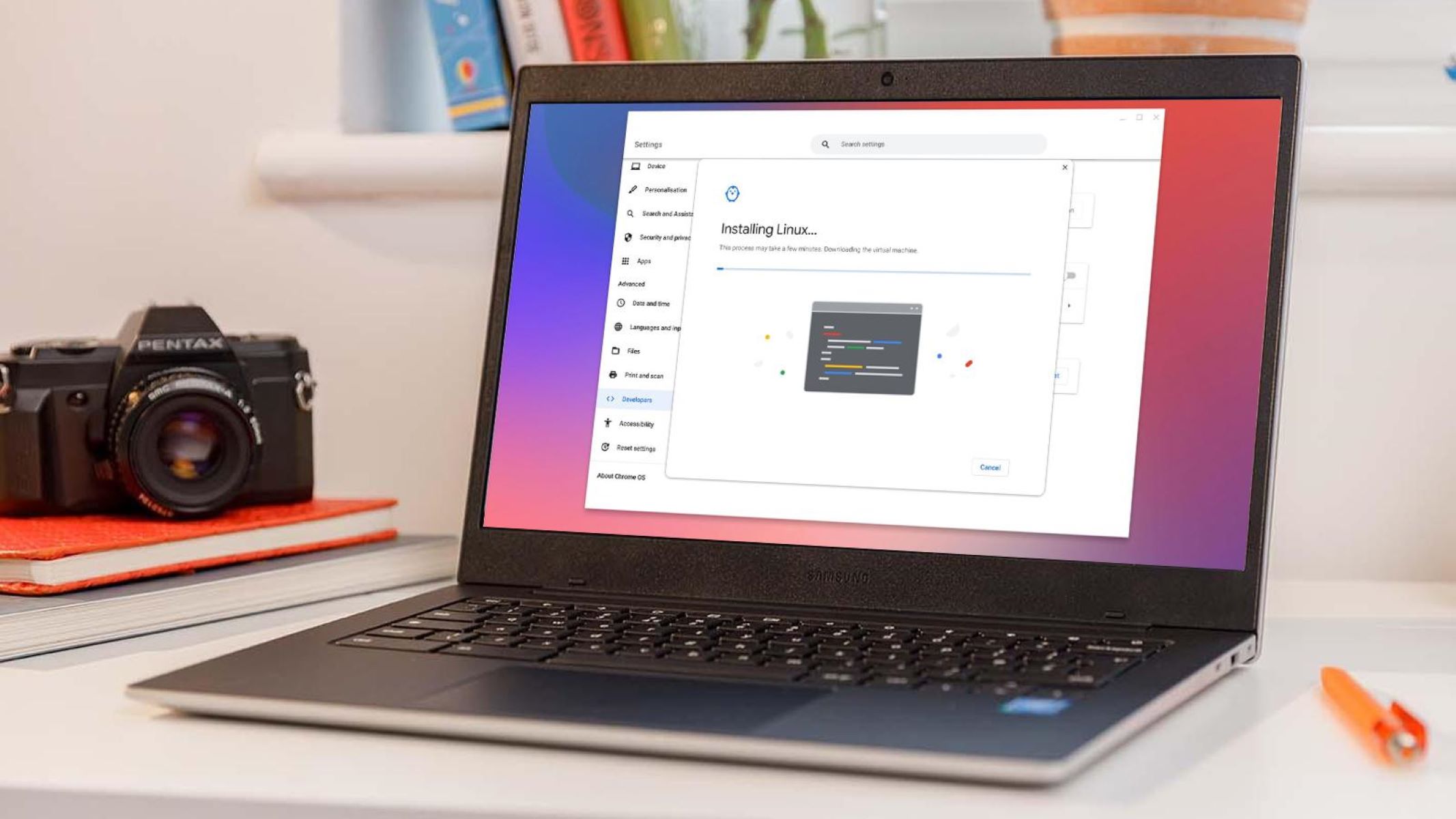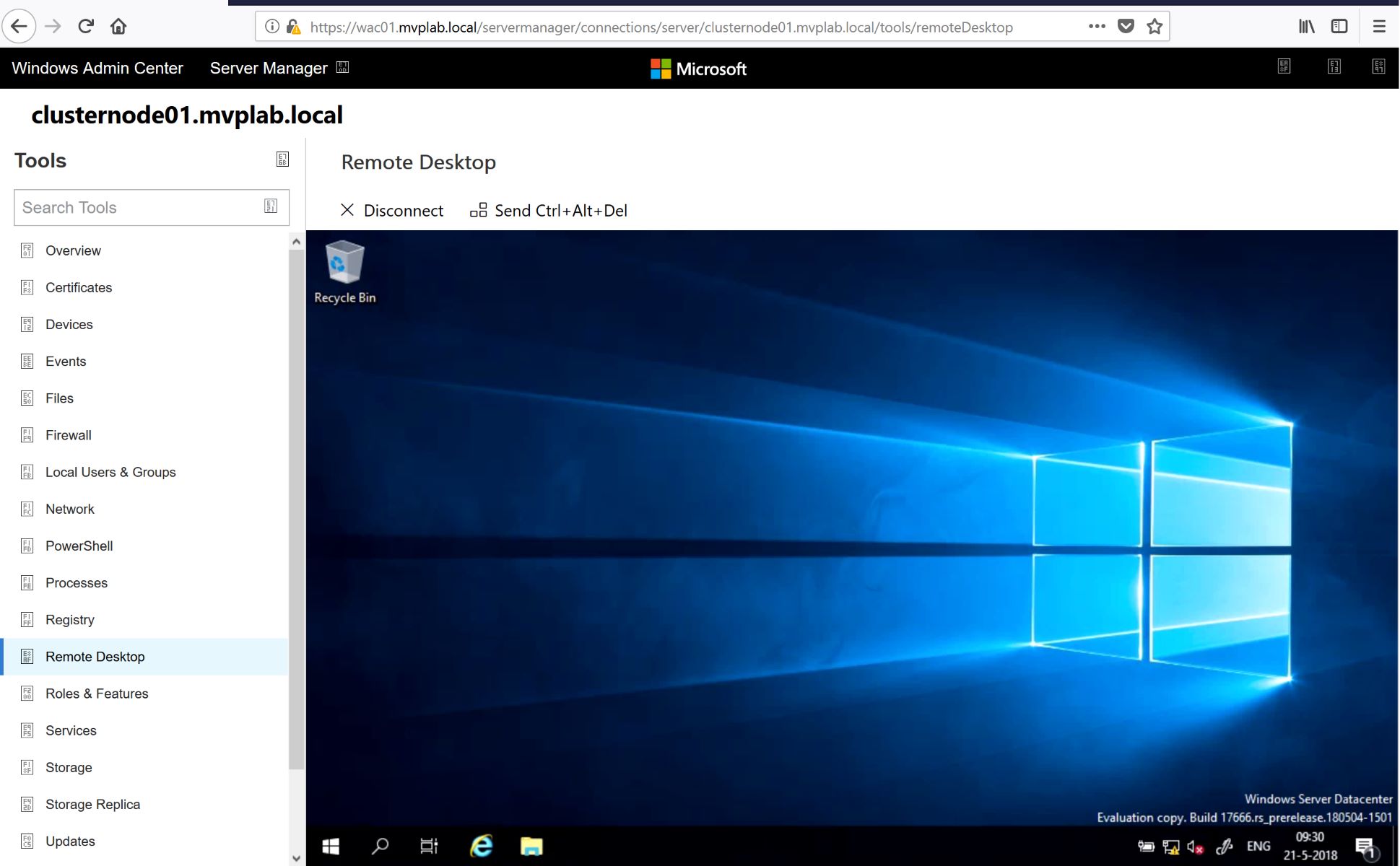Introduction
Welcome to our guide on how to access a virtual machine from another computer! Virtual machines have become indispensable tools for developers, allowing for the creation and testing of software in a controlled environment. However, accessing these virtual machines from a different computer is not always straightforward. In this article, we will explore various methods to establish a remote connection to your virtual machine, enabling you to control it from any device.
Whether you are a software developer collaborating with a team or an IT professional managing a network of virtual machines, being able to access your virtual machines remotely can greatly enhance productivity and convenience. This guide will provide step-by-step instructions on configuring network settings, enabling remote desktop functionality, setting up VPN connections, and troubleshooting common issues.
Before we dive into the details, it is important to note that the methods described in this article assume that you have already set up a virtual machine on a host system. Additionally, each virtualization platform may have its own specific steps and configurations, so it is recommended to consult the documentation for your particular virtualization software.
Throughout this guide, we will present different options for accessing your virtual machine remotely, allowing you to choose the method that best fits your specific requirements. So, whether you need to connect to your virtual machine for testing, development, or administrative purposes, let’s explore the various methods available to ensure seamless remote access.
Setting up the Virtual Machine
Before you can access your virtual machine remotely, it is essential to ensure that the virtual machine is properly set up with the necessary configurations. Here are the steps to follow:
1. Choose a virtualization platform: Select the virtualization software that best suits your needs. Popular options include VMware, VirtualBox, and Hyper-V.
2. Install the virtualization software: Download and install the chosen virtualization software on your host system. Follow the installation instructions provided by the software vendor.
3. Create a new virtual machine: Open the virtualization software and create a new virtual machine. Specify the desired operating system, allocated memory, disk space, and network settings for the virtual machine.
4. Install the guest operating system: Once the virtual machine is created, proceed to install the guest operating system. This involves booting the virtual machine from an installation ISO file or disk and following the installation prompts.
5. Set up user accounts and network configurations: During the guest operating system installation, create user accounts and configure network settings as per your requirements. Ensure that the virtual machine is connected to the network or has a network adapter configured.
6. Install necessary software and updates: After the guest operating system is installed, install any required software and updates within the virtual machine. This may include development tools, applications, and security patches.
7. Customize virtual machine settings: In the virtualization software, you can customize various settings for the virtual machine, such as CPU allocation, graphics settings, and video memory. Adjust these settings based on the specific needs of your virtual machine.
8. Take snapshots (optional): It is recommended to take snapshots of the virtual machine at key stages to facilitate easy restoration in case of issues or changes made in the future.
By following these steps, you will have a properly configured virtual machine ready to be accessed remotely. The next step is to configure the network connection to ensure connectivity between the host and the virtual machine.
Configuring the Network Connection
To access your virtual machine from another computer, you need to ensure that the network connection is properly configured. Follow these steps to set up the network connection:
1. Choose a network adapter mode: In the virtualization software, select the appropriate network adapter mode for your virtual machine. The options typically include NAT (Network Address Translation), Bridged, Host-only, or Internal networking. Each mode has its own advantages and considerations, so choose the one that suits your requirements.
2. Assign an IP address: Once you’ve selected the network mode, configure the network settings within the guest operating system. This may involve setting a static IP address or using DHCP to obtain an IP address automatically.
3. Enable port forwarding: If you are accessing the virtual machine from a remote location, you may need to enable port forwarding on your router. This allows incoming connections to reach the virtual machine. Consult your router’s documentation or settings to configure port forwarding.
4. Configure firewall settings: Ensure that the firewall on your host system and virtual machine is configured to allow incoming and outgoing connections on the required ports. This will allow the virtual machine to communicate with the host and other devices on the network.
5. Test the network connection: Once the network settings are configured, test the network connection from the virtual machine. Ping the host system or other devices on the network to verify connectivity.
6. Configure DNS settings (optional): If your virtual machine requires domain name resolution, configure the DNS settings within the guest operating system. This ensures that the virtual machine can resolve domain names to IP addresses properly.
By properly configuring the network connection, you can ensure that your virtual machine is accessible from other devices on the network. The next step is to enable remote desktop functionality to establish a remote connection.
Enabling Remote Desktop
To access your virtual machine remotely, you can enable the Remote Desktop feature. Here are the steps to enable and configure Remote Desktop:
1. Enable Remote Desktop: On the virtual machine’s operating system, navigate to the System or Control Panel settings and enable the Remote Desktop feature. This option may be found under the “System Properties” or “Remote Settings” section, depending on the operating system.
2. Configure Remote Desktop settings: Once Remote Desktop is enabled, you can configure additional settings such as security options, user access, and remote session behavior. Determine whether you want to allow remote connections from any computer or limit it to specific users.
3. Set up port forwarding (if necessary): If you are accessing the virtual machine from a remote location, you may need to set up port forwarding on your router. Forward the default Remote Desktop Protocol (RDP) port, which is 3389, to the internal IP address of the virtual machine.
4. Configure firewall settings: Ensure that the firewall on your host system and virtual machine allows incoming connections on the Remote Desktop port. This allows remote devices to establish a connection with the virtual machine.
5. Connect remotely: Once everything is configured, you can connect to the virtual machine remotely. On the remote computer, open the Remote Desktop client application and enter the IP address or hostname of the virtual machine. Provide the necessary credentials and establish the remote session.
6. Customize Remote Desktop settings (optional): Within the Remote Desktop client or the virtual machine’s operating system, you can customize additional settings. These include screen resolution, keyboard and mouse behavior, and audio redirection.
By enabling and configuring Remote Desktop, you can securely access your virtual machine from any computer with Remote Desktop client capability. However, if Remote Desktop is not suitable for your requirements, you can also set up a VPN connection for remote access, which we will discuss in the next section.
Setting Up a VPN Connection
If you prefer a more secure method of accessing your virtual machine remotely, setting up a VPN (Virtual Private Network) connection is an excellent option. VPNs create an encrypted tunnel between your computer and the virtual machine, ensuring that your connection is private and secure. Follow these steps to set up a VPN connection:
1. Choose a VPN provider: Select a VPN provider that suits your needs. There are several popular VPN services available, such as NordVPN, ExpressVPN, or OpenVPN. Choose one that offers the features and security protocols you require.
2. Install and configure the VPN client: Download and install the VPN client software provided by your chosen VPN provider. Once installed, open the client and follow the instructions to set up and configure the VPN connection. This may involve entering VPN server addresses, configuring encryption settings, and providing login credentials.
3. Connect to the VPN server: Once the VPN client is configured, you can connect to a VPN server. This establishes a secure connection between your computer and the server, encrypting all data transmitted between them.
4. Access the virtual machine: With the VPN connection established, you can now access your virtual machine as if you were on the same local network. Open the Remote Desktop client or any other remote access method and connect to the virtual machine using its local IP address.
5. Disconnect from the VPN: After you have finished using the virtual machine, remember to disconnect from the VPN server to ensure the privacy of your internet connection is restored.
6. Troubleshoot VPN connectivity issues: If you encounter any connectivity issues while using the VPN, double-check your VPN client settings, firewall configurations, and network setup. Often, restarting the VPN client or the virtual machine can resolve minor connectivity problems.
Setting up a VPN connection adds an extra layer of security to your remote access efforts. It helps protect sensitive data and ensures that your virtual machine is securely accessible from anywhere in the world. In the next section, we will explore how to actually access the virtual machine remotely using the methods we have discussed.
Accessing the Virtual Machine Remotely
Now that you have configured your virtual machine and established the necessary network and remote access settings, it’s time to actually access the virtual machine remotely. Depending on the methods you have chosen, follow these steps to connect to your virtual machine:
Using Remote Desktop:
- Ensure that the virtual machine’s Remote Desktop feature is enabled and properly configured.
- On the remote computer, open the Remote Desktop client application or use the built-in Remote Desktop functionality in your operating system.
- Enter the IP address or hostname of the virtual machine, along with the necessary login credentials.
- Click “Connect” and wait for the connection to be established.
- You should now have remote access to the virtual machine, allowing you to control it as if you were physically present.
Using VPN:
- Ensure that your VPN client software is installed and properly configured.
- Connect to the VPN server using the VPN client.
- Once the VPN connection is established, open the Remote Desktop client or other remote access software on your local computer.
- Enter the local IP address of the virtual machine in the remote access software.
- Provide the necessary login credentials for the virtual machine.
- Click “Connect” and wait for the connection to be established.
- You should now have secure remote access to your virtual machine through the VPN connection.
It’s important to note that the specific steps and software interfaces may vary depending on your virtualization platform, operating systems, and remote access methods. Always refer to the relevant documentation and guidelines provided by your specific software or service providers.
Additionally, ensure that you have a stable and reliable internet connection on both the remote computer and the virtual machine to ensure smooth remote access and minimize latency.
By following these steps, you can easily and securely access your virtual machine from another computer or location, providing you with flexibility and convenience in managing and utilizing your virtual environment.
Troubleshooting Tips
While setting up and accessing a virtual machine remotely, you may encounter some common issues. Here are some troubleshooting tips to help you resolve these problems:
Unable to connect to the virtual machine:
- Double-check the network configuration of the virtual machine, ensuring it has a valid IP address and is connected to the network properly.
- Verify that the necessary ports for remote access (such as RDP or VPN ports) are open and forwarded correctly on your router/firewall.
- Ensure that the virtual machine’s firewall allows incoming connections on the specified ports.
- Check the network connectivity of both the host system and the remote computer to rule out any network issues.
Performance or latency issues:
- Make sure that your host system and virtual machine have sufficient resources allocated, such as CPU, memory, and disk space.
- Consider optimizing the virtual machine’s settings, such as adjusting the number of CPU cores or increasing the allocated memory.
- If accessing the virtual machine over a VPN, try connecting to a different VPN server or using a different protocol to see if it improves performance.
- Ensure that your internet connection is stable and has sufficient bandwidth to handle the remote access requirements.
Authentication or login issues:
- Verify that the username and password entered for the virtual machine are correct. Ensure there are no typos or errors.
- Check if the user account on the virtual machine has the necessary permissions to allow remote access.
- If using a VPN, confirm that the VPN client is using the correct login credentials and that the client’s configuration matches the VPN server settings.
- Resetting the password of the virtual machine or the user account can sometimes help resolve authentication issues.
Firewall or security software blocking connections:
- Temporarily disable any firewall or security software on the virtual machine or the host system to see if it allows the remote connection.
- Ensure that the necessary ports and protocols are allowed through the firewall configurations on both the virtual machine and the host system.
- Configure any antivirus or security software to exclude the virtual machine or the remote access software to prevent interference with the connection.
These troubleshooting tips should help you identify and resolve common issues you may encounter while accessing your virtual machine remotely. If the issue persists, consult the documentation and support resources of your virtualization software or contact their support team for further assistance.
Conclusion
Accessing a virtual machine from another computer opens up a world of convenience and possibilities for remote work, collaboration, and testing. In this guide, we have explored various methods to achieve this, including configuring the network connection, enabling remote desktop, setting up a VPN connection, and troubleshooting common issues.
By properly setting up the virtual machine and configuring the network settings, you can establish a reliable connection between the host system and the virtual machine. Additionally, enabling remote desktop functionality allows for direct access and control of the virtual machine from a remote location.
If security is a concern, setting up a VPN connection provides an encrypted tunnel between your computer and the virtual machine, ensuring a secure and private connection.
Throughout this guide, we have provided step-by-step instructions and troubleshooting tips to assist you in overcoming any obstacles you may encounter along the way. Remember to consult the documentation for your specific virtualization platform and remote access software for detailed setup instructions.
Whether you are a developer, IT professional, or simply an individual seeking remote access to your virtual machine, these methods will help you achieve seamless and efficient remote connections.
With remote access to your virtual machine, you can work on software development, conduct tests in a controlled environment, manage server configurations, or perform administrative tasks from anywhere in the world.
Now that you have a clear understanding of how to access a virtual machine from another computer, you are ready to take advantage of the flexibility, convenience, and productivity benefits it offers. Experiment with different methods, explore the settings and configurations available, and adapt them to your specific needs.
Enjoy the power and convenience of accessing your virtual machine remotely, and unlock new possibilities in your work and productivity!

























